
In so many ways, the wine industry in British Columbia has evolved much more rapidly than in here in Ontario.
Without going into stylistic differences and quality of the wines, you just have to look at access and acceptability for the wines being made in B.C. and where you can buy it.
It has been a progressive and steady evolution for wineries in Canada’s most western province led by industry and supported by politicians and consumers.
It’s pretty simple, really: Make good juice, get it to the people and they will come back for more.
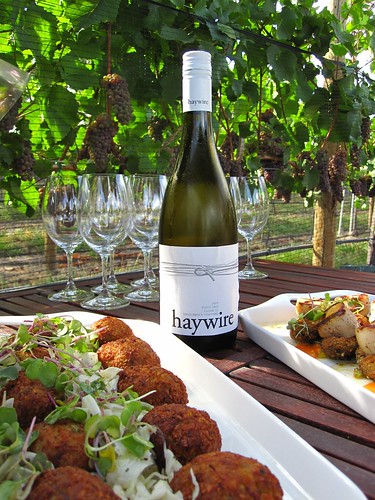
Ontario, on the other hand, is stuck in the make-good-juice mode while having a devil of a time getting it to the people. With few politicians willing to champion the cause of accessibility and a government stuck in the Dark Ages of post-Prohibition-inspired control over booze, the majority of wines in the province are left to languish on their own winery shelves with the only hope of significant sales left to the few adventurous consumers who make the trek to Niagara, Prince Edward County or Lake Erie North Shore.
In B.C., miraculously (some say), VQA only wine stores were established to offer a huge bounty of B.C. wines conveniently located for wine lovers throughout the province. The VQA store in Penticton, one of 20 in the province, for example, has 600 different B.C. wines from 80 VQA wineries. These are wines you wouldn’t normally find in government liquor stores.
And then came partial privatization of the booze business in B.C. fuelled by industry and consumers and supported by provincial politicians. There are now over 1,000 private liquor stores, 600 of which are designated cold beer and wine stores. In fact, private stores far out-number the government’s shrinking empire of 208 liquor stores.
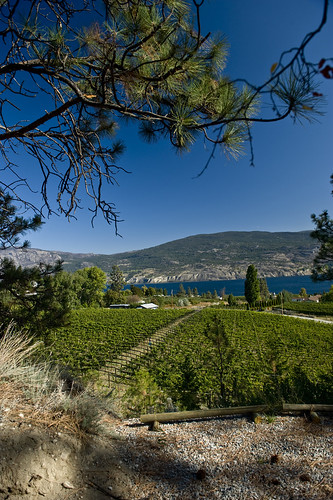
In these private stores, the owners are free to stock their shelves with whatever wines they want. It could have a B.C. theme or no theme at all. The point is, consumers will decide your success by what you sell in the store. And in B.C. that means a diverse selection of VQA B.C. wines. There is plenty of consumer buy-in to support shelves overflowing with B.C. wines.
In Ontario, as you know, we have no private stores (aside from the grandfathered licences held by a few of the big wineries that sell their own products) and no hope at the moment that will ever change. There is no desire to reform the antiquated system we have been dealt since the days of Prohibition because there is no will change on the part of our politicians and no public outcry from consumers.
We don’t have a Dan Albas, the federal Tory MP who represents the electoral district of Okanagan-Coquihalla. Albas championed federal legislation that allows for the free flow of wine sales across provincial borders. While the legislation passed through parliament it is now up to the provinces to open the door to the inter-provincial movement of wine so wineries in B.C. can ship wines to Ontario (and beyond) and vice versa.
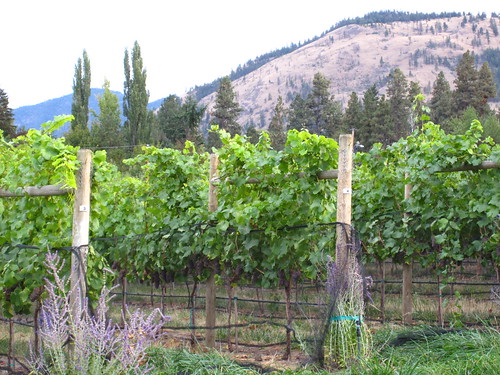
Some provinces have made the necessary changes, but, surprise-surprise, Ontario has resisted the move as it continues to hang on to the notion that a monopoly on wine and booze in Ontario is what Ontarians want and deserve, because, don’t you know, it builds hospitals and is the only morally responsible body which can check the IDs of under-age drinkers. Again, we have no politicians in Ontario with the spirit and/or courage to do what’s right, to do what the people want — to drag us out of the remnants of Prohibition. It’s a sad state of affairs.
So, of course, B.C. is on a faster route to prosperity for its wine industry.
It’s in that spirit the brilliant idea for the Okanagan Crush Pad was envisioned and executed.
The Okanagan Crush Pad is a winery located in Summerland, B.C. and is home to the house brands Haywire and Bartier and Scholefield.
It is also home to a growing number of other custom crush client owned brands, often called “virtual” wineries. The licensed winery was been designed to facilitate production of multiple small lots of wines from many different sources.
In 2011, the Okanagan Crush Pad processed 225 tonnes (17,000 cases) of their own wines and nine clients. In 2012, the winery is at capacity with 450 tonnes (33,750 cases) for 12 clients.
Some facts:
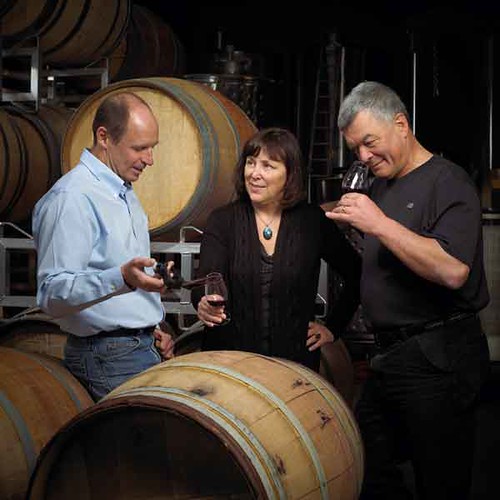
Year Established: 2010
Location: 16576 Fosbery Road, in Summerland, B.C.
Ownership: Christine Coletta and Steve Lornie (in above photo with Michael Bartier)
Open to the public: Seasonally July to October or by appointment.
Key team members:
Julian Scholefield – operations manager
Michael Bartier – head winemaker
Alberto Antonini – consulting winemaker and viticulturist Theo Siemens – vineyard manager
David Scholefield – wine adviser and industry relations
Vineyards:
Owned Vineyard: Switchback Vineyard in Summerland with 10 acres planted to Pinot Gris.
Leased Vineyard: Secrest Mountain Vineyards in Oliver with 37 acres planted to Gewürztraminer, Pinot Gris, Pinot Blanc, Chardonnay, Pinot Noir, and Gamay Noir
Wines:
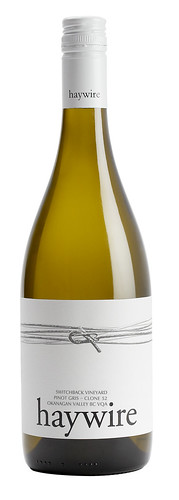 Haywire: Pinot Gris, Chardonnay, Gamay Noir Rosé, Pinot Noir, Gamay Noir
Haywire: Pinot Gris, Chardonnay, Gamay Noir Rosé, Pinot Noir, Gamay Noir
Bartier and Scholefield: White, rosé and red blended wines.
The Okanagan Crush Pad is the first facility of this kind in Canada, where a team of industry consultants offers diverse services to the wine industry.
Custom-crush clients can choose from a list of available services ranging from vineyard management and winemaking to branding, packaging, marketing, communications, media relations and sales distribution.
It is a beautiful site located in Summerland, overlooking the Switchback Vineyard to Okanagan Lake.
Visitors to the winery pass the vines en route to the graffiti-mural exterior that welcomes them to the modern O Tasting Lounge.
Visitors can see the unique fermentation ‘eggs’ that comprise only one of the distinctive aspects of the high-end, small lot, custom winemaking facility.
The goal of the crush pad is to produce distinct, terroir-focused super-premium wines from the Okanagan Valley and to provide a range of services to aid in the development, production, marketing, and sale of proprietary wines.
The facility is open to the public seasonally, but is primarily designed as a co-working space for winemakers to work side by side to share ideas and to collaborate. The design aesthetic ‘less is more’ is expressed in the state-of-the-art wine cellar with exceptional wine as the outcome.
Services provided include:
• Production capacity (tonnes): 450 tonnes storage capacity (350,000 litres)
• Bottling services: cork & screw cap
• Sparkling wine production
• Winemaking services
• Crushing, pressing, juicing
• Whole cluster pressing
• Barrel storage including topping, sulphuring, cleaning, ozoning
• Temperature-controlled stainless storage
• Temperature controlled and humidified barrel aging
• Cross flow filtration
• Comprehensive lab services
• Temperature controlled concrete fermentation and aging
As well as the above, the crush pad offers sales and marketing services and everything a winery needs to take their wine from field to market.

Another unique aspect of the Okanagan Crush Pad is the egg-shaped concrete fermenters made from Sonoma Cast Stone. The crush pad was the first in Canada to use the concrete fermenters.
The “eggs” are as heavy as a rhinoceros when empty (4,200 lbs) and weigh as much as an adult orca when full.
Alberto Antonini, Okanagan Crush Pad’s Italian consulting winemaker, has a history of working with concrete in Europe. Concrete had been used for centuries in winemaking, but was more or less abandoned with the arrival of stainless steel.
These egg-shaped tanks take a forward-thinking approach to the old world practice, by using modern features such as temperature-control tubing. These tubes are embedded into the walls of the eggs and to provide even temperature throughout the tank. No parts that require cleaning come into direct contact with the juice.

There is also an impact on the flavour development of wine when concrete is used. Like oak vessels, which are commonly used in winemaking, concrete is slightly porous, allowing the wine to breathe as it would in oak. However, unlike oak, the eggs leave no oaky flavour as they gently diffuse oxygen.
The tank’s egg shape means more of the cap (skins and pulp floating on top of the juice in red- wine fermentation) stays submerged. This lengthier contact of the skins and pulp with the juice means wines come out brighter with higher fruit notes and prettier secondary aromas that you don’t tend to find in wines fermented in stainless steel.
Concrete does a very good job of showcasing a wine’s true terroir, according to the Okanagan Crush Pad. Oak can mask those distinctions, but concrete doesn’t add, remove, or mask anything. It lets the fruit shine through to be a true statement of the place it was grown.
I recently tried some of the crush pad’s wines from Haywire and Bartier and Scholefield. Here is what I liked:
Note: The Okanagan Crush Pad has a wine club for Ontario residents called The Club @ Crush Pad. Members get 20% off all case order shipped directly to your door, a 10% discount on any orders less than a case, access to limited release wines and new releases, and preferential shipping rates to Ontario consumers and other benefits.
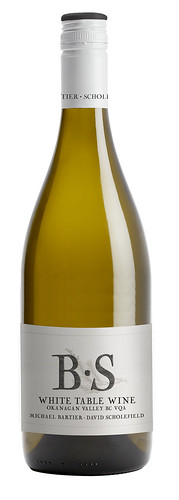 Bartier and Scholefield White Table Wine 2010 ($19, 88 points) — The blend is Pinot Gris, Sauvignon Blanc and Chardonnay from fruit grown in the South Okanagan. It’s a pure fruit-driven wine with peach, melon, pineapple and citrus notes on the nose. It’s bone dry on the palate with crisp, tart fruit and lemon-lime zing through the finish. Gorgeous summer wine and ready to serve with oysters on the half shell.
Bartier and Scholefield White Table Wine 2010 ($19, 88 points) — The blend is Pinot Gris, Sauvignon Blanc and Chardonnay from fruit grown in the South Okanagan. It’s a pure fruit-driven wine with peach, melon, pineapple and citrus notes on the nose. It’s bone dry on the palate with crisp, tart fruit and lemon-lime zing through the finish. Gorgeous summer wine and ready to serve with oysters on the half shell.
Haywire Canyonview Vineyard Chardonnay 2011 ($23, 89 points) — This is a sleek, clean wine that was fermented in a concrete “egg” and underwent “extreme” lees stirring but no oak or malolactic fermentation whatsoever. What you have here is pure Chablis-like Chardonnay with aromas of citrus, lime, peach fuzz and a seam of minerality. It’s clean and bright on the palate with fresh citrus fruit, stony minerality and plenty of acid to perk it up through the finish.
Haywire The Bub 2011 ($25, 90 points) — Bub is the nickname of Okanagan Crush Pad owner Christine Coletta’s daughter Alison. It’s also an aptly named wine for a nifty sparkler such as this beauty. It’s a classic blend of Chardonnay and Pinot Noir from grapes grown in a cool mountain vineyard site near Oliver and made in the traditional Champagne method but closed with a convenient crown cap. The nose shows yeasty-toasty lemon-lime zest, brioche and green apple notes. It’s creamy-toasty on the palate yet maintains a lively citrus zip through the finish to go with a vivacious mousse. Highly gulpable.
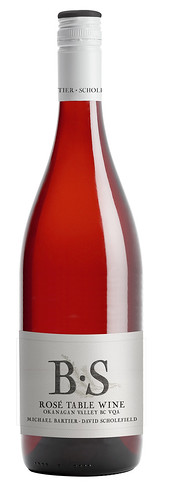 Haywire Switchback Vineyard Pinot Gris 2011 ($23, 88 points) — A nose of creamy stone fruit that’s pure and fresh with just a squirt of lemon and grapefruit. You get a sense of texture on the palate with creamy peach, melon and citrus lifted by firm acidity.
Haywire Switchback Vineyard Pinot Gris 2011 ($23, 88 points) — A nose of creamy stone fruit that’s pure and fresh with just a squirt of lemon and grapefruit. You get a sense of texture on the palate with creamy peach, melon and citrus lifted by firm acidity.
Haywire Gamay Noir Rose 2010 ($19, 90 points) — A lovely pale salmon colour, that looks so inviting in the clear bottle, leads to cranberry, raspberry, violets and cherry notes on the nose. This is made in a wonderful fresh style, bone dry, yet bursting with red fruits and mouth-watering acidity.
Bartier and Scholefield Rose Table Wine 2010 ($19, 89 points) — Made from 100% Gamay Noir, this rose shows ripe strawberry, black cherry and rhubarb notes on the nose. The red fruit basket of flavours caress the palate while a hint of spice shows on the finish. Again, good acidity here.
Haywire Gamay Noir 2011 ($25, 91 points) — The fruit for Gamay is from the Secrest Vineyard located on a high bench at the foot of McIntyre Bluff, one of the defining formations in the Okanagan Valley. What a gorgeous Gamay with a nose of lovely fresh berries, plums and sweet summer cherries. It’s fresh and pure on the palate with a light dusting of garden herbs to go with all those cherry-plum-raspberry fruit flavours. This makes a pretty good case for the validity of Gamay in the Okanagan.
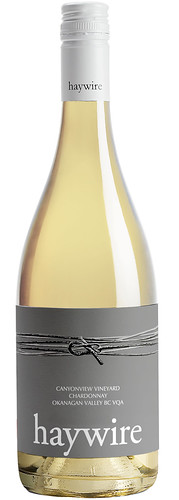 Haywire Pinot Noir 2010 ($27, 90 points) — The nose shows field raspberry, black cherry and an inviting note of cassis and spice. The ripe red fruits are joined by subtle spice, a touch of earthiness and lovely texture that all leads to a smooth finish.
Haywire Pinot Noir 2010 ($27, 90 points) — The nose shows field raspberry, black cherry and an inviting note of cassis and spice. The ripe red fruits are joined by subtle spice, a touch of earthiness and lovely texture that all leads to a smooth finish.
Bartier and Scholefield Red Table Wine 2008 ($20, 89 points) — A blend of Merlot, Cabernet Franc, Cabernet Sauvignon, Malbec and Petit Verdot all grown on the clay bench northeast of Penticton. It was aged for 42 months in neutral oak before being bottled. The nose shows an array of red fruits, bramble bush, earth and integrated spices. This is nicely balanced on the palate with complementing red and dark fruits, spice and soft-ish tannins. This is perfectly ready to drink now.







Comment here